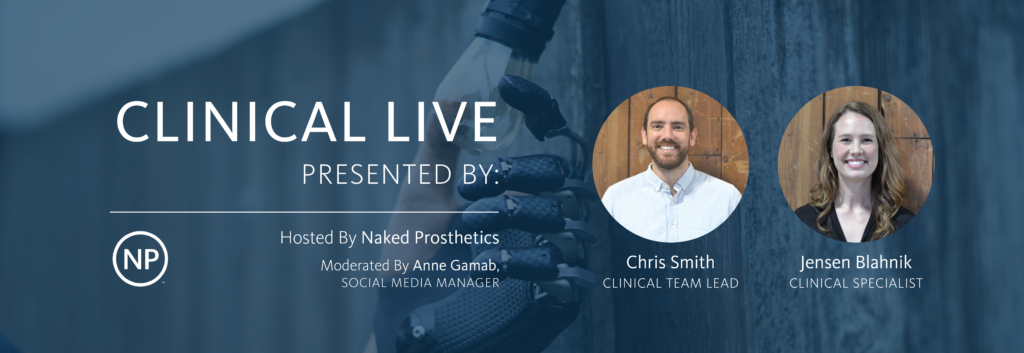Naked Prosthetics has completed our first live event hosted through YouTube and LinkedIn: “Ask our Clinicians”. On Wednesday, April 20th, Clinical Team Lead Chris Smith and Clinical Specialist Jensen Blahnik answered questions submitted by live attendees as well as our social media followers in the weeks leading up to the event. If you were unable to attend, we have summarized the event here to share the valuable information covered. Scroll to the bottom to watch the full video.
Chris is a certified and licensed prosthetist/orthotist with a master’s in Prosthetics & Orthotics (MPO) from the University of Washington. Jensen is a certified prosthetist with a bachelor’s degree in Exercise Science from Florida State University and master’s degree in Engineering Management of O&P from Florida International University.
What can we modify on a device that’s Naked Prosthetics approved that will not affect the warranty?
JB – That’s a great question! There are definitely a lot of adjustments that can be made in house at the clinic. Our Customer Care team sends out Clinical Operation Guidelines as well as access to Tech Tip videos to help walk through static and dynamic alignment of our devices. Adjustments off the top of my head can be done with the provided hex keys at the ring slide location and anchor on the ThumbDriver and MCPDriver. It is also a good idea to have a Dremel with you at the fitting appointment. A Dremel can be used to adjust the trim lines of a PIPDriver and the rings of MCPDriver and ThumbDriver to improve fit and function. Another modification is a custom strap on the ThumbDriver or MCPDriver. This would be a replacement for the Velcro straps we send with the device, but we would recommend the CP reach out for design tips before making their own custom straps. If there are still fitting concerns after these options, I would recommend calling Customer Care to schedule a Clinical Support appointment.
CS – Taking the Dremel to relieve any web space impingement on the PIPDriver is pretty common. Feel free to play around with that.
I’m a PIPDriver wearer and have been playing around with the different shim combinations to keep it secure, but sometimes it would still get loose. Do you have any suggestions on what I can do?
CS – For sure, when we are looking at a well fitted PIPDriver on a patient we want a snug, intimate fit. We recommend doing a shake test. Just put the device on and shake! Say that doesn’t feel right, then we will look at tightening the fit of the device. If the device overall is too loose, we use sims in small, medium, and large thicknesses on the proximal part of the PIPDriver. If you are maxed out on shim usage in all four locations, then we would consider doing a re-ring sizing for a new device. Contact your prosthesis to address where the shims don’t help completely.
When using the sizing rings for intake, what kind of fit are you looking for each of the devices?
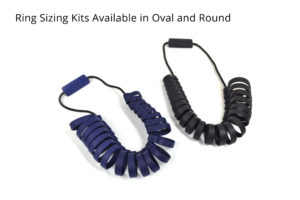 JB – The ring sizing part of the intake is really important. We’re looking for ring sizes to be snug but not tight. We are looking for the ring to slide on and off the patient’s digit with relative ease, but there shouldn’t be any open space between the ring and the digit itself. That is why we include two different shapes of rings in the sizing kits, both oval and round. We know digits are very unique so it is best to use different shaped rings on the same finger. Depending on what device you are fitting for you, you can mix and match to best fit the patient.
JB – The ring sizing part of the intake is really important. We’re looking for ring sizes to be snug but not tight. We are looking for the ring to slide on and off the patient’s digit with relative ease, but there shouldn’t be any open space between the ring and the digit itself. That is why we include two different shapes of rings in the sizing kits, both oval and round. We know digits are very unique so it is best to use different shaped rings on the same finger. Depending on what device you are fitting for you, you can mix and match to best fit the patient.
CS – Just jumping in here, if you are ever unsure, send us a photo of the ring on the finger from a “down the barrel” angle and we can help make the right decision.
What insurances are you seeing approving the devices? Any tips and tricks for the approval process?
CS – Good question. This comes up very frequently! As manufacturers we do not bill insurance so we really only have information that is passed along to us. We do provide a Reimbursement Support packet with great resources for prosthetists to use during the insurance approval and reimbursement process. The best way to advocate for yourself is to write letters of medical necessity from your perspective and your prosthesis perspective. Most insurance reviewers have 6-7 minutes to review the package so photos are best. From our experience though, most workman’s comp claims are usually approved right away. Most private insurance frequently covers our devices, and Medicare/Medicaid has covered our devices, but you may end up going through the lengthy appeals process before they agree to pay for the prosthesis.
I am currently in the process of getting a three-digit device, but one of my digits was deemed too short and webbed to be able to use an MCPDriver. I wanted to check and see if there is a device for this type of presentation?
JB – Things like this do come up in the evaluation process. The best way to evaluate if a finger is too short or not to use one of our devices is to do what we call the string test. To do the test, the prosthetist will find the correct ring size from our kit and put it snug on the digit. The CP will then pull the string, trying to extend the finger. If the patient can flex their finger while the ring stays in place on the residuum, then they will most likely be able to use one of our prostheses. If the ring falls off during the test, it puts the candidacy in a gray area for the evaluation process. That would be important to know for us to set expectations when looking at the best device. For shorter digits, it is essential to keep in mind suspension on the ring can determine if the patient sees success with one of our devices.
Are the devices available internationally?
CS – Yes! Our prostheses are available in a number of countries around the world. The best way to see if they are available in your country is to reach out to the Customer Care team. We are always expanding our availability, so if we aren’t currently in your country, make sure to check back periodically to see if that has changed.
What do we need to show on the positive hand mold?
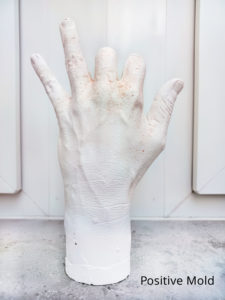 JB – The positive hand mold is a really important part of the intake process for the MCPDriver and ThumbDriver. The position for the hand in the mold must be neutral and relaxed. The patient’s wrist should not be extended or flexed, radially or ulnar deviated. Digits should be relaxed and not close together and the thumb does not cup into the palm. It is important that the mold extends up about an inch past the ulnar styloid so that the wrist crease is fully captured. We do have casting guidelines available when you have a candidate. These molds can be taken with both alginate or two-part silicone, it’s really up to you.
JB – The positive hand mold is a really important part of the intake process for the MCPDriver and ThumbDriver. The position for the hand in the mold must be neutral and relaxed. The patient’s wrist should not be extended or flexed, radially or ulnar deviated. Digits should be relaxed and not close together and the thumb does not cup into the palm. It is important that the mold extends up about an inch past the ulnar styloid so that the wrist crease is fully captured. We do have casting guidelines available when you have a candidate. These molds can be taken with both alginate or two-part silicone, it’s really up to you.
What fabrication center do we recommend for custom socketing?
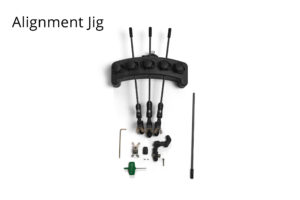 CS – For those new to our devices, our body-driven devices PIPDriver, MCPDriver, and ThumbDriver are dependent on intact anatomy and strength. Our GripLock Finger is our passive device for someone with limb difference(s) who would wear a custom hand socket. We don’t necessarily recommend a specific central fabrication center for custom partial hand sockets. We do provide the passive ratcheting prostheses and the prosthetist will design and fabricate the partial hand socket for the attachment.
CS – For those new to our devices, our body-driven devices PIPDriver, MCPDriver, and ThumbDriver are dependent on intact anatomy and strength. Our GripLock Finger is our passive device for someone with limb difference(s) who would wear a custom hand socket. We don’t necessarily recommend a specific central fabrication center for custom partial hand sockets. We do provide the passive ratcheting prostheses and the prosthetist will design and fabricate the partial hand socket for the attachment.
JB – When you order a GripLock Finger you will also get an alignment jig and instructions to help you with this process if you are fabricating your partial hand socket in-house. We also provide an overlay photo of the ordered GripLock Fingers in alignment over the photos of the patient’s hand. This can help during the alignment and fabrication process as well. We have seen beautiful sockets from many providers!
I am a CPO and have two patients that I am thinking about using GripLock Fingers. What recommendations do you have when taking impressions for the socket?
JB – You can base it off the mold from any other body-driven devices but it does depend on how you are designing the socket for your patient.
CS – It gets into the patient’s presentation. If you are interested in our GripLock Finger our Customer Care team can look at photos and Range of Motion (ROM) videos as well as create an overlay. We’ll size different GripLock Fingers onto that hand and see how many we can fit comfortably to make a natural grasp pattern.
What is the process once I have a candidate for an NP Device?
JB – If you’re a prosthetist and you think you have a candidate you would reach out to our Customer Care team and they will send you intake forms and a sizing kit. At the intake appointment, you would be taking Palmer and Dorsal photos as well as active ROM videos. It is really important to not only take into consideration their presentation but also their goals. Based on their goals Clinical would come in and help set expectations for the device fit and function.
CS – On the Clinical team, we’re prosthetists and hand therapists first. We got into this field to help the population who have limb differences. If you are a Prosthetist and have a patient come in where you are not familiar with the options out there our clinical team can assist with guiding you and your patient to the best option available.
When will we be taking digital molds of the hands?
JB – Technology is always changing and we always want to be at the forefront. Right now positive molds are still needed for intake but if you have scans we are happy to take those as well.
Does the switch on the GripLock Finger catch on clothing? 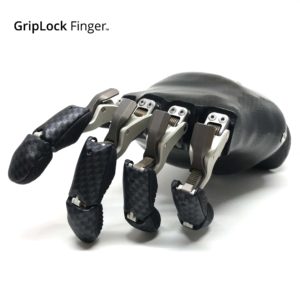
CS – The pawl was a bold choice when we were designing the device. When we sent it to our beta users, they liked the pawl being out more because it helps them disengage easier and without using both hands.
How would one handle a disarticulation at the PIP joint?
JB – There are a few things to consider. First – what are the patient’s goals? There are length considerations here depending on the device. We can make the PIPDriver static if they are looking for something to help with length restoration of the digit and weight distribution in the hand. Since there is no PIP joint, there would be no active range of motion to utilize a body-driven PIPDriver. Static PIPDrivers can be designed with pre-flexed device DIP joints too to put the device into a functional position for the patient. Again, this is very dependent on goals. An MCPDriver on this type of presentation can be complex. For ideal function and clearance, an MCPDriver will add about 2 1/4″ from the end of the patient’s residuum to the tip of the device in extension. For PIP disarticulation length, this may be longer than the other digits on the hand and the grasps with the device will be larger. You have to weigh the options, and this is where Customer Care will be very helpful.
Cs – We can send demo devices to you. They are a one-size fit so your patient can get an idea of how much extra length would be added to their hand.
It’s a pretty good product for biocompatibility, but are you considering making it look like a human finger aesthetically?
CS – That gets back to the philosophy of NP. The short answer is no, the idea is to create something functional while also aesthetically pleasing. It’s naked, it’s out there!
WATCH THE VIDEO BELOW
Thank you to everyone who joined us live with Clinical. If you have a question for our Clinical team you didn’t see answered here, check out our Resources page, where we have linked FAQ for a variety of audiences, including Device Wearers, Prosthetists and Orthotists, Physicians, and Hand Therapists. You can also click the link here to watch the full Clinical Live event.
Reach our Customer Care team at [email protected] for more information about our products and ordering process or call 360-915-9724, Toll-Free: 888-977-6693.
Keep an eye out for more LIVE events as we are eager to answer your questions!

